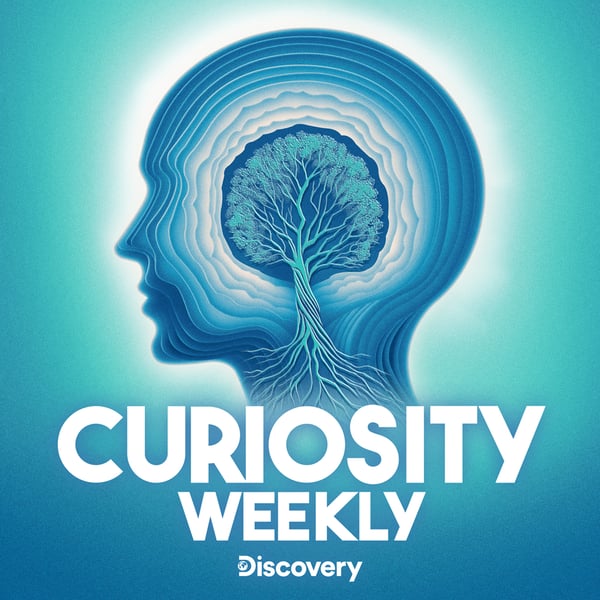What Makes People Cultural Omnivores, Archaeologists’ Prehistoric Poop Problem, and How to Tell Stars and Planets Apart in the Sky
Curiosity Weekly
Warner Bros. Discovery
4.6 • 935 Ratings
🗓️ 27 May 2020
⏱️ 12 minutes
🧾️ Download transcript
Summary
Learn about how archaeologists are solving a prehistoric poop problem; what leads people to be “cultural omnivores”; and an easy trick for telling stars and planets apart when you’re stargazing.
What can we learn from prehistoric poop? by Cameron Duke
- Borry, M., Cordova, B., Perri, A., Wibowo, M., Prasad Honap, T., Ko, J., Yu, J., Britton, K., Girdland-Flink, L., Power, R. C., Stuijts, I., Salazar-García, D. C., Hofman, C., Hagan, R., Samdapawindé Kagoné, T., Meda, N., Carabin, H., Jacobson, D., Reinhard, K., … Warinner, C. (2020). CoproID predicts the source of coprolites and paleofeces using microbiome composition and host DNA content. PeerJ, 8, e9001. https://doi.org/10.7717/peerj.9001
- Fossilized Feces Tell Tale of Earliest Americans. (2008, April 3). NPR.org. https://www.npr.org/templates/story/story.php?storyId=89355318
- Shillito, L.-M., Blong, J. C., Green, E. J., & Van Asperen, E. (2020). The what, how and why of archaeological coprolite analysis. Earth-Science Reviews, 103196. https://doi.org/10.1016/j.earscirev.2020.103196
- The origin of feces: CoproID reliably predicts sources of ancient poop. (2020). EurekAlert! https://www.eurekalert.org/pub_releases/2020-04/mpif-too041420.php
Research uncovers what leads people to be "cultural omnivores" — and it's not nice by Kelsey Donk
- Pop Concert, Opera — Or Both? What Drives People To Become “Cultural Omnivores.” (2020, April 23). Research Digest; Research Digest. https://digest.bps.org.uk/2020/04/23/pop-concert-opera-or-both-what-drives-people-to-become-cultural-omnivores/
- Shin, H., & Youn, N. (2020). How insecure narcissists become cultural omnivores: Consuming highbrow culture for status seeking and lowbrow culture for integrity signaling. Psychology of Aesthetics, Creativity, and the Arts. https://doi.org/10.1037/aca0000303
There's an Easy Trick to Telling Stars and Planets Apart in the Sky by Cody Gough
- Byrd, D. (2015). Why do stars twinkle, but planets don’t? | EarthSky.org. Earthsky.Org. https://earthsky.org/space/why-dont-planets-twinkle-as-stars-do
- Ashwin. (2015, July 17). Why Do Stars Twinkle, But The Sun Doesn’t? Science ABC. https://www.scienceabc.com/nature/universe/why-do-stars-twinkle-but-the-sun-planets-doesnt.html
- Astronaut James Reilly Describes Seeing Stars in Space (2014). SpaceFlight Insider - Official Page YouTube Channel. https://www.youtube.com/watch?v=LaUCMzgidvs
Subscribe to Curiosity Daily to learn something new every day with Cody Gough and Ashley Hamer. You can also listen to our podcast as part of your Alexa Flash Briefing; Amazon smart speakers users, click/tap “enable” here: https://www.amazon.com/Curiosity-com-Curiosity-Daily-from/dp/B07CP17DJY
Find episode transcript here: https://curiosity-daily-4e53644e.simplecast.com/episodes/what-makes-people-cultural-omnivores-archaeologists-prehistoric-poop-problem-and-how-to-tell-stars-and-planets-apart-in-the-sky
Hosted on Acast. See acast.com/privacy for more information.
Transcript
Click on a timestamp to play from that location
| 0:00.0 | Hi, you're about to get smarter in just a few minutes with Curiosity Daily from Curiosity.com. |
| 0:06.0 | I'm Cody Gough. And I'm Ashley Hamer. |
| 0:08.0 | Today you learn about how archaeologists are solving a prehistoric poop problem. |
| 0:12.0 | What leads people to be cultural omnivores, and an easy trick |
| 0:16.3 | for telling stars and planets apart when you're stargazing. |
| 0:19.1 | Let's satisfy some curiosity. |
| 0:21.6 | The archaeological record holds the clues to humanity's past and everyday |
| 0:26.3 | archaeologists work to piece those clues together into a clearer picture. |
| 0:30.5 | Archaeology may not involve as much bolder dodging and not picture. out there, like prehistoric poop, which researchers keep finding. |
| 0:45.0 | Everywhere. The archaeological record is completely covered in it, |
| 0:51.0 | and that's a problem for reasons I'll get into in a minute. As for what it |
| 0:55.5 | actually looks like, prehistoric poop can exist in various stages of decay, from a |
| 1:00.9 | little dried out to almost completely fossilized. |
| 1:04.0 | Scientists call fossilized poops copperlates, |
| 1:08.0 | and there's a lot we can learn from them. |
| 1:10.0 | Scientists can use them to investigate our ancestors' diets, or shed light on the evolution of the human digestive system, |
| 1:17.0 | or study parasite evolution and the history of the human gut microbiome. |
| 1:22.0 | And scientists have known for a long time that decrepit dung is a gold mine of information, |
| 1:27.0 | but it can be challenging to study. |
| 1:30.0 | Though that's not because poop is hard to find, like I said, it's everywhere, but because it's |
| 1:34.7 | hard to know what animal produced it. |
| 1:37.5 | You can generally tell the source of fresh poop by its size and shape, but ancient poop has transformed so much over the millennia that that kind of identification is impossible. |
... |
Please login to see the full transcript.
Disclaimer: The podcast and artwork embedded on this page are from Warner Bros. Discovery, and are the property of its owner and not affiliated with or endorsed by Tapesearch.
Generated transcripts are the property of Warner Bros. Discovery and are distributed freely under the Fair Use doctrine. Transcripts generated by Tapesearch are not guaranteed to be accurate.
Copyright © Tapesearch 2025.

